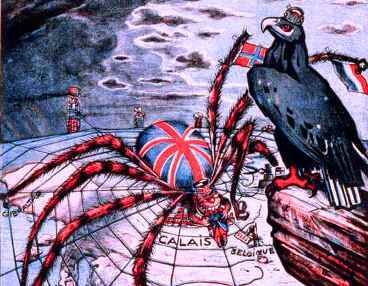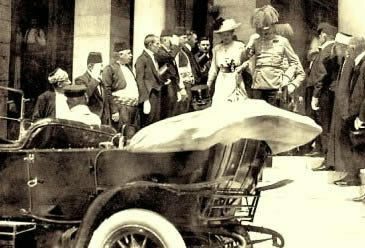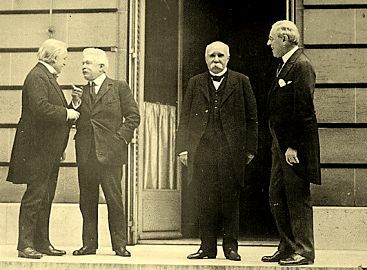John Ronald Reuel Tolkien (1892-1973), better known by the initials placed in front of the surname, J.R.R. Tolkien, became world famous because of the literary universe he created, “Middle Earth”, where he set novels such as The Hobbit and Lord of the Rings. Tolkien, in addition to being one of the greatest representatives of the literary fantasy genre, was also a great university researcher. His field of expertise was philology, the historical and etymological study of languages.
An extremely important fact about Tolkien's life is his participation in the First World War. Just like your friend and also a writer, Ç. S. Lewis, and thousands of young intellectuals of the same time, Tolkien had to go to the front of the battle when the war was already in advanced process in the year of 1916. In previous years, battles such as Yes, in Belgium, where toxic gases, had already shown the catastrophic face of war. In 1916, two other battles would produce an unprecedented carnage, the Battle of Verdun and the Somme. Tolkien participated in that last one.
The grouping of the British armed forces to which Tolkien was linked was the First Battalion of the "Lancashire Fusiliers”, who was present at theSomme's Battle. In that battle, on the first day of combat alone, there were 30,000 British soldiers wounded and nearly 20,000 dead. The impressions of this battle had populated Tolkien's imagination for many years. The visions of men torn apart, mutilated, with deformed faces and rotting bodies led him years later to the elaboration of the image of the lake of the dead, in The Lord of the Rings, and also to the image From orcs, with its marked physical deformity.
Do not stop now... There's more after the advertising ;)
Before going to war, Tolkien had already married Edith Bratt and he sent his wife several letters. In some of them, he mentioned the situations he went through in the middle of the war, the meditations on the work he wanted to do again in Oxford, where he worked as a teacher, ideas for the development of the Elvish language and other fictional elements that would be incorporated into his construction.
On one of the combat occasions, Tolkien contracted trench fever and was hospitalized. During this period, he began writing the short stories “The Fall of Gondolin” and “The Birth of Eärendil”, as he himself reports in a letter to the publisher Houhgton Miffin Co, in July 1955:
“The Fall of Gondolin (and The Birth of Eärendil) was written in hospital and on leave after surviving the Battle of the Somme in 1916. The central part of the mythology, the question of Lúthien Tinúviel and Beren, arose from a small clearing in the forest full of “hemlocks” (or other white umbelliferae) near Roos on the Holderness peninsula—where I occasionally went when I was freed from regimental duties when I was at the Humber Garrison in 1918.”
Unlike authors like Erich Maria Remarque and Ernst Jünger, who wrote their novels “Nothing New on the Front” and “Steel Storms”, respectively, portraying the events of World War I realistically, Tolkien preferred to incorporate these events allegorically into his works of fiction. fantastic.
By Me. Cláudio Fernandes
Would you like to reference this text in a school or academic work? Look:
FERNANDES, Claudio. "J.R.R. Tolkien in World War I"; Brazil School. Available in: https://brasilescola.uol.com.br/guerras/jrr-tolkien-na-primeira-guerra-mundial.htm. Accessed on June 28, 2021.
wars

Background to World War I, World War I, diplomatic agreements, race imperialist, arms race, Triple Alliance Treaty, Triple Entente, preparations for the First World War.
wars

Brazil in World War I, World War I conflicts, Triple Entente, cargo ships, German submarines, Spanish flu, Treaty of Versailles, indemnification.
wars
World War I, Great War, Battle of the Marne, War of Movement, War of Position, Trench War, United States, Russia, Germany, Woodrow Wilson, Armistice de Compiègne, Treaty of the Fourteen Points for World Peace.
wars

Balkan Question, Turkish-Ottoman Empire, Balkan Peninsula, Austro-Hungarian Empire, Bulgaria, Serbia, Romania, Greece, Montenegro, Herzegovina, Archduke Francis Ferdinand, Black Hand, Triple Entente, Triple Alliance, First War World.
wars

World War I, Treaty of Versailles, Indemnities, Germany, Austro-Hungarian Empire, Empire Ottoman-Turkish, Treaty of Saint-German, Treaties of Sèvres, Treaty of Lausanne, revanchism, totalitarian regimes, 1929 crisis.

